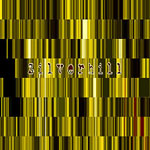
CD, Adeptsound, 2009
www.myspace.com/zilverhill
This is a gloomy, twilit descent into dark but inspiring territories. While it brightens towards the end, a melancholy air clings to it, and its darker passages are uneasy and tense. This is probably not recommended for anyone prone to Seasonal Affective Disorder, or suffering from serious depression, although for some the bleakness might actually be consoling. The final track is even titled “To Autumn”.
Zilverhill features industrial/experimental veterans Tim Bayes of Schuster and Paul Carr of pRESENT dAY bUNA. They first worked together in the 1980s as IBF (Ideas Beyond Filth). All these projects are new to me but on this evidence they must be worth investigating further.
Overall, the album sits loosely in the cinematic dark ambient sector, but with some distinctive touches. The opening “Cornerstone” demonstrates Zilverhill’s skill at combining woozy, strangely decayed chords, dialogue samples and an almost tangible pressure created by a growing fog of sound that only becomes denser on the following tracks.
The fog-bound, elegiac strings and mournful percussion of “Unceasing” produce an atmosphere not unlike the defunct German industrial project SRP. This is the most cinematic piece and the album’s finest moment. The brightest moment, by constrast, comes from the unexpectedly melodic opening of “Sixteen Provinces”, which initially seems a little too kitsch, but it’s worth tolerating to hear dark drones and a swirl of voices gradually infiltrate and prevail before it again returns. “Erebus” is its dark twin and is certainly the most sinister track.
“Cone” features distressed choral samples and drones that create a gloomy atmosphere reminiscent of the drones on the soundtrack to Bela Tarr’s seven-hour film “Satantango” – a remorselessly bleak slice of Central European gloom. There is an unresolved contradiction on the album between the European feel generated by some of the music and the extensive use of American voice samples, many of which are partly lost in the murk and hard to make out. Some non-American voices might have been interesting, as would more purely instrumental tracks. That said, most of the samples are used well and often add significantly to the atmosphere.
“Latent-Active-Descent” is so well produced that it’s only small details that can really be faulted. “The Eternal Day Is Done” features uneasy, animal-like sounds that irritate, but this is probably deliberate. Here, as elsewhere, the work of Inanna comes to mind, particularly when harsh metallic sound cuts through the constantly shifting detail.
This is only a limited release, which is a real shame, as it deserves a wide audience. The arrangements breathe and the elements shimmer in a way that shows that real craftsmanship and attention to detail have gone into what is one of the most satisfying albums of the year. There is nothing revolutionary or dramatically innovative about any of the elements here, yet they cohere into something that often feels fresh and instantly memorable, leaving lasting traces and compelling and rewarding repeat listening.
[8/10]
— Alexei Monroe
